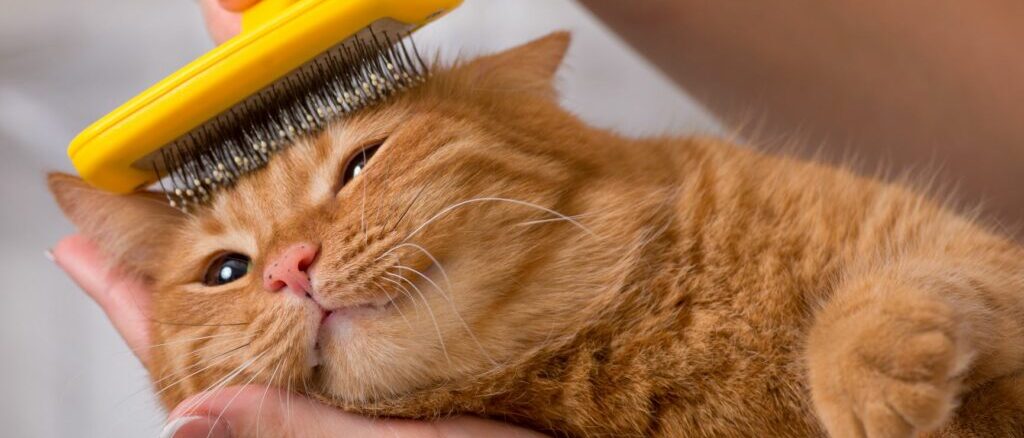A Guide for Pet Parents
As a pet parent, you might have seen your cat making hacking sounds and then throwing up a clump of hair. This is called a hairball, and while it may look scary, it’s usually normal. However, sometimes hairballs can be a sign of something more serious. So how do you know when to worry?
This article will help you understand what hairballs are, when they’re harmless, and when they may point to a health issue that needs a vet’s attention.
-
What Are Hairballs?
Hairballs (also called trichobezoars) are balls of hair that your cat swallows while grooming. Cats love to lick themselves clean, and in the process, they end up swallowing loose fur. Most of the hair goes through the digestive system and comes out in the stool. But sometimes, it stays in the stomach and forms a hairball, which your cat will eventually vomit.
Hairballs are usually long, thin, and tube-shaped — not round like real balls — because they come up through the narrow food pipe (esophagus).
-
Are Hairballs Normal?
Yes — in small amounts and occasionally. Most cats cough up a hairball once in a while. It’s more common in:
- Long-haired breeds (like Persians and Maine Coons)
- Cats that shed a lot
- Cats that groom themselves (or other cats) excessively
One hairball every few weeks is usually nothing to worry about. But if your cat is coughing, vomiting, or trying to bring up a hairball very often, it might be a sign of a problem.
-
When Should You Worry?
Here are warning signs that hairballs may not be the real issue:
- Frequent vomiting
If your cat is vomiting more than twice a week, with or without hairballs, something might be wrong. This could mean your cat has a digestive issue, such as:
- Inflammatory bowel disease
- Food intolerance
- Parasites
- Other chronic conditions
- Retching without result (dry heaving)
Your cat keeps making gagging or coughing sounds but nothing comes out. This is called retching and can mean:
- A hairball is stuck
- There’s a blockage in the stomach or intestines
- There may be something else caught in the throat
If your cat keeps doing this for more than a day, see your vet.
- Loss of appetite or weight
If your cat is eating less or losing weight, this is not normal and should never be ignored. A blocked hairball or another health problem might be to blame.
- Changes in poop
If your cat is having trouble going to the toilet (constipation), or has diarrhea, it may mean that the hair is affecting the intestines. Hairballs can cause blockages, which can be serious.
- Lethargy or hiding
If your normally active cat becomes quiet, hides more, or sleeps more than usual, it may be a sign that something is wrong internally.
-
Could It Be Something Else?
Sometimes what looks like a hairball problem is actually a different health issue. For example:
- Coughing from asthma can sound like gagging from a hairball
- Kidney disease or liver problems may cause vomiting
- Eating something they shouldn’t (like thread or plastic) can cause blockage
- Over-grooming due to stress, skin problems, or pain can increase hairball frequency
That’s why it’s important to watch for other signs and talk to your vet if you’re unsure.
✅ Tips to Reduce Hairballs
Here are some ways you can help prevent hairballs at home:
- Brush your cat regularly
Brushing removes loose fur before your cat swallows it. Long-haired cats may need daily brushing.
- Hairball-control food
Some special cat foods are made to help hair pass through the digestive system. These often contain extra fiber.
- Give hairball remedies
There are gels and pastes (often malt or petroleum-based) that help hair move smoothly through the stomach and intestines.
- Encourage drinking water
Water helps keep the digestive system working well. Make sure fresh water is always available. Some cats prefer moving water — consider using a water fountain.
- Reduce stress and boredom
Cats may over-groom when they are bored or anxious. Give them toys, playtime, and a calm environment to reduce extra licking.
-
When to See a Vet Immediately
Contact your vet if:
- Your cat vomits multiple times in a day
- Your cat is trying to vomit for more than 24 hours without success
- No stool for more than 2 days
- There is blood in vomit or stool
- Your cat is very weak, not eating, or hiding
These could be signs of a serious blockage or illness.
-
Final Thoughts
Hairballs are a normal part of a cat’s life — but frequent, painful, or difficult hairballs should never be ignored. As a loving pet parent, you know your cat best. If you see anything unusual or worrying, don’t wait. It’s better to get your cat checked and be safe.
Share This Post

